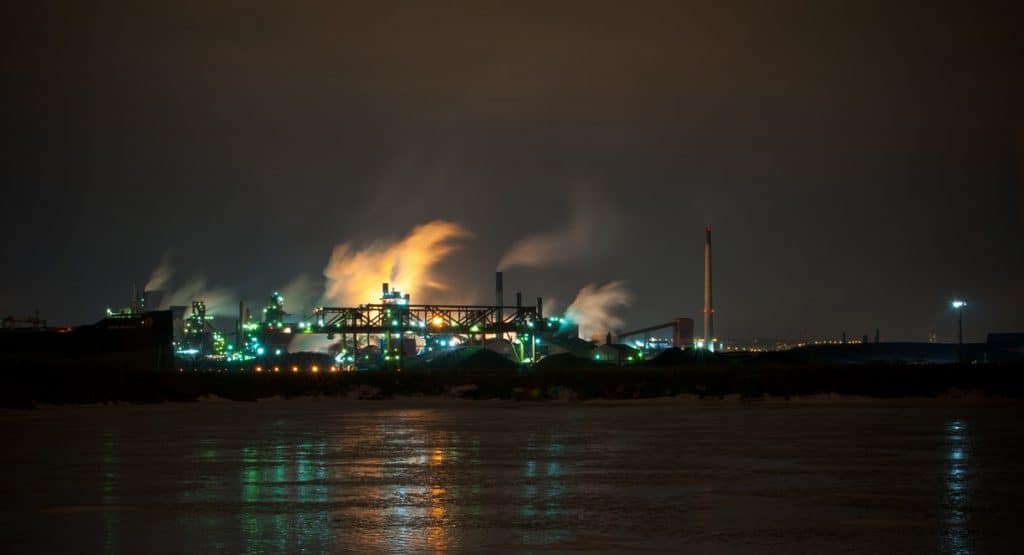
Gas Turbine Power Plant Layout
The layout of a gas turbine power plant plays a crucial role in its efficiency, operational reliability, and cost-effectiveness. While plant designs vary, they all share common components that influence energy conversion, maintenance, and overall performance. A well-structured layout reduces waste, improves airflow, and enhances fuel utilization, making gas turbine power plants one of the most efficient methods of fossil fuel-based power generation.
This article explores the operation of gas turbine power plants, their layout considerations, site selection factors, and advantages and disadvantages.
How Do Turbine Power Plants Operate
A gas turbine power plant converts chemical energy from fuel into mechanical energy, which then drives a generator to produce electricity. The process begins in the compressor, where pressurized air is drawn in, increasing its velocity and temperature. This high-pressure air moves into the combustor, where it mixes with fuel—typically natural gas or other liquid fuels—and ignites at temperatures as high as 1400–1500°C. The combustion process generates high-energy gases, which expand and pass through the turbine, forcing the blades to rotate. This rotational energy powers the generator, converting mechanical motion into electrical energy.
Gas turbines are among the most efficient fossil fuel power generation systems, offering fast start-up times and high power output. Compared to other power plants, they require less space, fewer components, and shorter construction times, making them cost-effective and adaptable.
Gas Turbine Power Plant Layout Considerations
The layout of a gas turbine power plant must integrate essential components in a way that maximizes energy efficiency and minimizes operational losses. One of the largest sections of the plant is the turbine housing, which contains the main gas turbine system. This area is designed to allow for efficient airflow and easy maintenance access.
Adjacent to the turbine housing is the auxiliary building, which houses fuel pumps, control panels, and cooling systems. Efficient placement of these components ensures that operators can quickly access critical systems without disrupting plant operations. Fuel storage tanks are typically located near the turbine housing to ensure a continuous and reliable fuel supply.
Other key components in the layout include intercoolers, heat exchangers, waste heat boilers, and ductwork. These elements play a critical role in improving efficiency by recovering and reusing waste heat. A well-structured layout reduces fuel consumption, enhances thermal efficiency, and ensures that the plant operates with minimal energy loss.
Selecting a Power Plant Site
Before designing the layout of a gas turbine power plant, selecting an optimal site is essential for cost-effective operation and long-term efficiency. Several factors influence this decision, including proximity to the power demand center. Power plants should be located as close as possible to load centers to minimize transmission costs and reduce energy losses.
Land availability is another critical factor. Gas turbine power plants require sufficient space for current operations and future expansions. Selecting a site with affordable land and room for growth ensures long-term sustainability. Additionally, plants should be located away from residential areas due to noise pollution concerns but still easily accessible for workers and fuel deliveries.
Fuel supply is another major consideration. The site must be close to reliable fuel sources, ensuring a steady and cost-effective energy supply. Additionally, the land should have high bearing capacity to support the heavy infrastructure, including turbines, compressors, and auxiliary buildings. Proper site selection ensures long-term efficiency, cost savings, and operational stability for a gas turbine power plant.
Advantages of Gas Turbine Power Plants
Gas turbine power plants provide several advantages over traditional power generation systems, making them a preferred choice for many energy producers. One of their main benefits is compactness and space efficiency. Unlike steam turbine power plants, gas turbines do not require boilers or feedwater systems, which significantly reduces their physical footprint.
Another key advantage is their lower maintenance and operating costs. Because gas turbines have fewer components and a simpler design, they experience less wear and tear, leading to reduced maintenance expenses. Additionally, gas turbines have fast start-up times, making them ideal for peak demand periods and emergency power supply situations.
Gas turbine power plants are also well-suited for cold weather conditions. Unlike steam turbines, which require significant preheating and can be affected by freezing temperatures, gas turbines can operate efficiently in low-temperature environments. These advantages make gas turbine power plants ideal for industrial applications, emergency backup power, and large-scale electricity production.
Disadvantages of Gas Turbine Power Plants
Although gas turbine power plants are more compact, steam power plants often have longer lifespans. This is because the high temperature of the combustion chamber (3000° F) can reduce the lifespan of the plant. Because exhaust gases from gas turbine power plants contain sufficient heat, the efficiency of the plants may be as low as 20 percent.
To maximize the efficiency of a gas turbine power plant, the layout must be taken into consideration. However, it is equally important to ensure that the controls of a plant are ensuring it operates safely and at full capacity. For more information about maximizing the efficiency of your plant with the most up to date control systems, reach out to our team today by requesting a quote online or by calling Petrotech at 504-620-6600.

